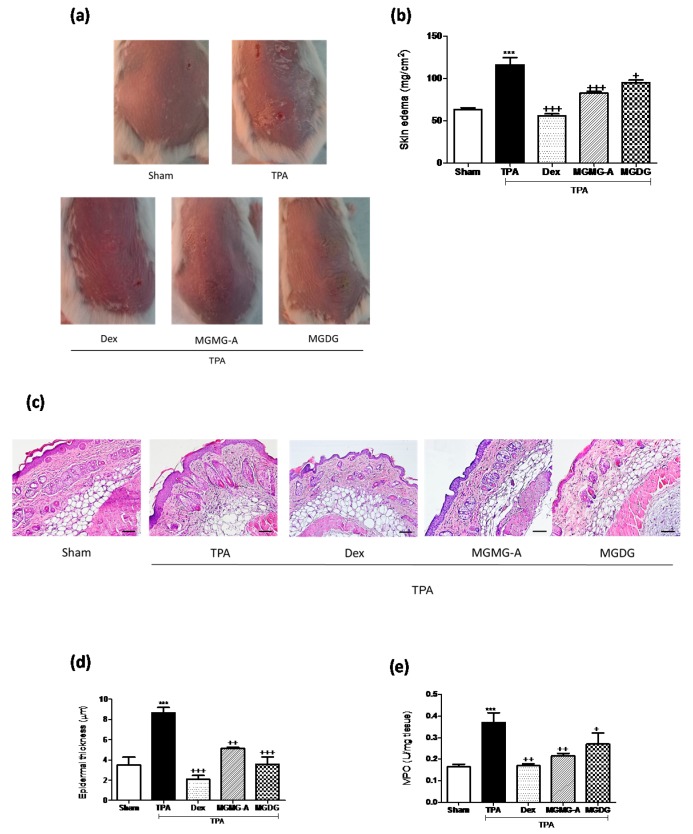Figure 2.
Topical application of acetone-dissolved glycolipids from I. galbana inhibits skin inflammation and hyperplasia on the murine 12-O-tetradecanoylphorbol-13-acetate (TPA)-induced model. The glycolipid MGMG-A (200 µM per site) or the fraction MGDG (200 µg/mL per site) were topically administered 30 min before TPA application (2 nmol per zone) during three consecutive days. Dex was used as a positive reference compound (200 µg per site). (a) Representative images of macroscopic appearance of the dorsal skin; (b) skin edema as punch biopsy; weight of edema (mg/cm2) was employed as marker of inflammatory skin process; (c) histological appearance of mouse dorsal skin after H&E-staining (n = 4); Bar = 100 µm. Original magnification 100×. (d) Epidermal thickness assessment in H&E-stained skin slides; (e) yeloperoxidase (MPO) activity in dorsal skin. Values are means with standard errors represented by vertical bars. Data are means ± SEM (n = 10 mice/group). Mean value was significantly different compared with the sham group (*** p < 0.001; Student t test). Mean value was significantly different compared with TPA group (+ p < 0.05, ++ p < 0.01, +++ p < 0.001; one-way ANOVA followed by Bonferroni’s Multiple Comparison test).

